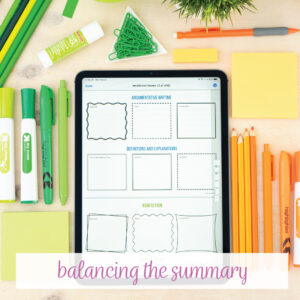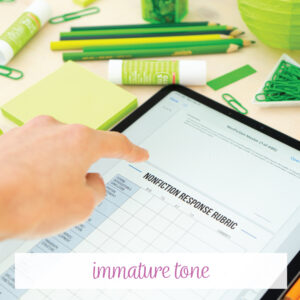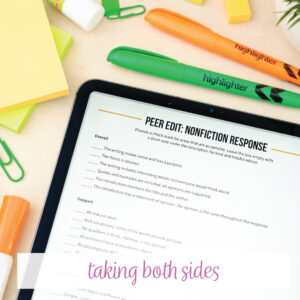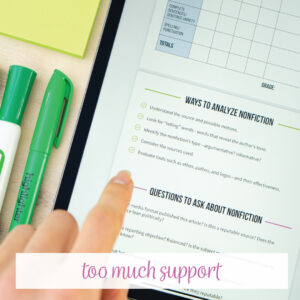You have informational texts for secondary students… now what?
Teaching informational texts with secondary students is a fabulous time to meet a variety of standards. You can meet many, but typically, writing and informational text standards are easy to hit.
When students read nonfiction, have them respond in writing. Nonfiction and writing perfectly mesh together. Students process what they’ve read (especially if the material is difficult) and articulate their thoughts.
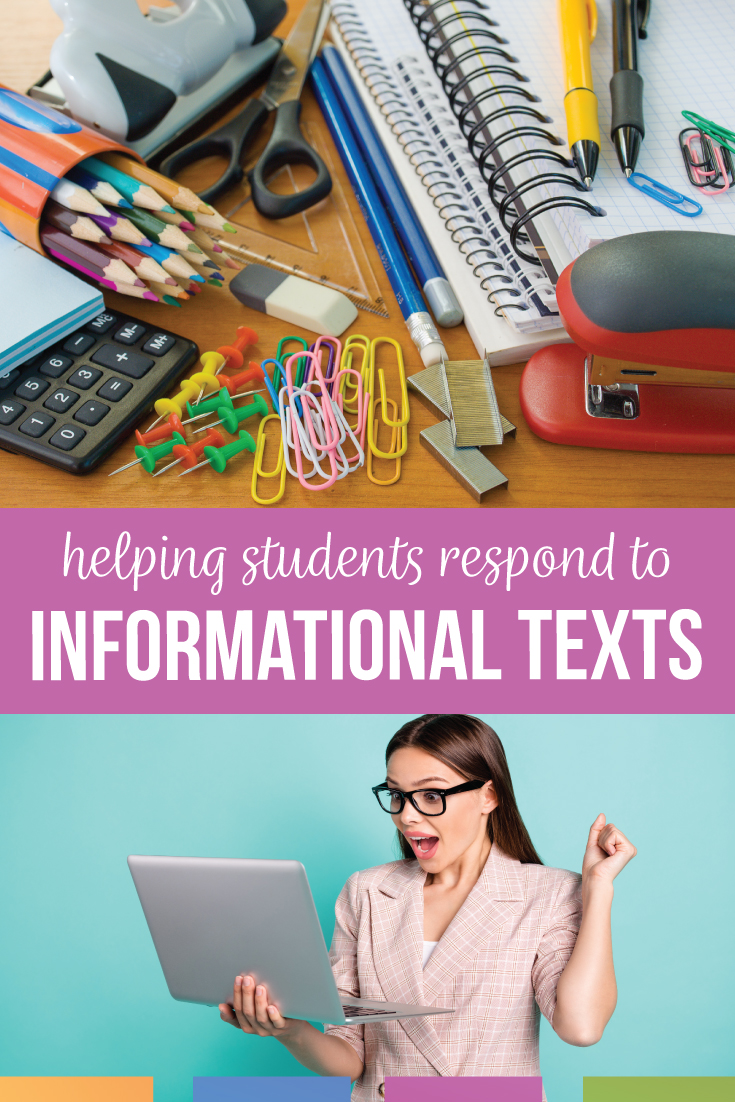
Why? Students become passionate about ideas that shape the real world and their lives. They are willing to respond. Capitalize on this!
Plus? How many times in college did you read nonfiction and respond: connecting the article to society, culture, the focus of the college course? Student nonfiction presents a perfect time to prepare the for the future.
New education standards are clear about student nonfiction articles. Students must read informational texts.
But! When they respond to the reading, a few problems are consistent. I’ve learned to expect some degree of these issues and to offset them as much as possible.
After you organize your nonfiction unit, you might anticipate a few areas where students could need help.
Here are areas of struggle for secondary students when responding to nonfiction, and a few tricks for getting students back on track.
Balancing the summary.
The entire response to reading nonfiction cannot be a summary, but students might lean that way. I limit students to a two-sentence summary which must include the piece’s title and author. Once students master an effective summary, I relax this requirement.
For responses to a relatively short nonfiction piece, the summary portion begins arguing main points. A narrowed summary also helps students narrow on the best support. As students gain ability and respond to longer pieces, I do release them to writing a longer summary. Responding to nonfiction is a new process for many students and giving them a strict guideline helps them at the start.
Immature tone.
Students are passionate and have feelings about what they read, especially if the content addresses their concerns or adults treating them unfairly. I fear I used to squash this excitement in an effort to rein in their tones. Don’t be surprised if you get responses like this author is stupid, how could anyone think this, and we can’t be serious. It helps to turn this on students: how would they feel if you said those comments about their papers? They may joke with you, but honestly, it would be unprofessional. You expect more from your students and trust they can present their ideas in a mature manner. Students will meet the expectation once you verbalize it with them: you expect a mature tone.
Presentation.
Part of showing a mature and well-crafted paper deals with presentation. Aside from MLA style, students should follow a few other guidelines. They should include the author and title of the nonfiction piece. Additionally, they should reference the author by their last name. Finally, they should present the information in a serious manner.
At one point in my teaching career, I feared that I was suffocating students with structure and guidelines. I eventually changed my approach. I now believe that students thrive with a bit of structure. Also, students will always have guidelines to follow, soon from a college professor or a boss. Asking students to include information that clarifies their response is an acceptable practice.
Taking both sides.
It’s easy to see both side of an issue, but when young writers attempt to cover them both in a response, their ideas get messy. First, encourage students to see both sides of the situation. Brainstorm and make lists about both sides.
When they respond, however, force them to take a side. They are learning to respond to nonfiction and if they attempt to cover both sides, they will be overwhelmed. Once they master those steps, encourage them to write a paragraph in opposition. The counterclaim can become a powerful piece for students to craft.
Too much support.
Students believe something; they’ve taken a stance! Acknowledge this while emphasizing that their ideas should be the bulk of the paper, with their ideas as the main points, and the support as simply that—support for their ideas. For students who struggle to see this, write out their main ideas with them. Ask them to write those main points into their responses. Then, have them find support that emphasizes their ideas. (An outline could also help.)
Student nonfiction articles and their responses are a part of all ELA classes. When students respond in writing, they will hopefully be invested in their ideas. For students just learning to respond to nonfiction, they will make several errors.
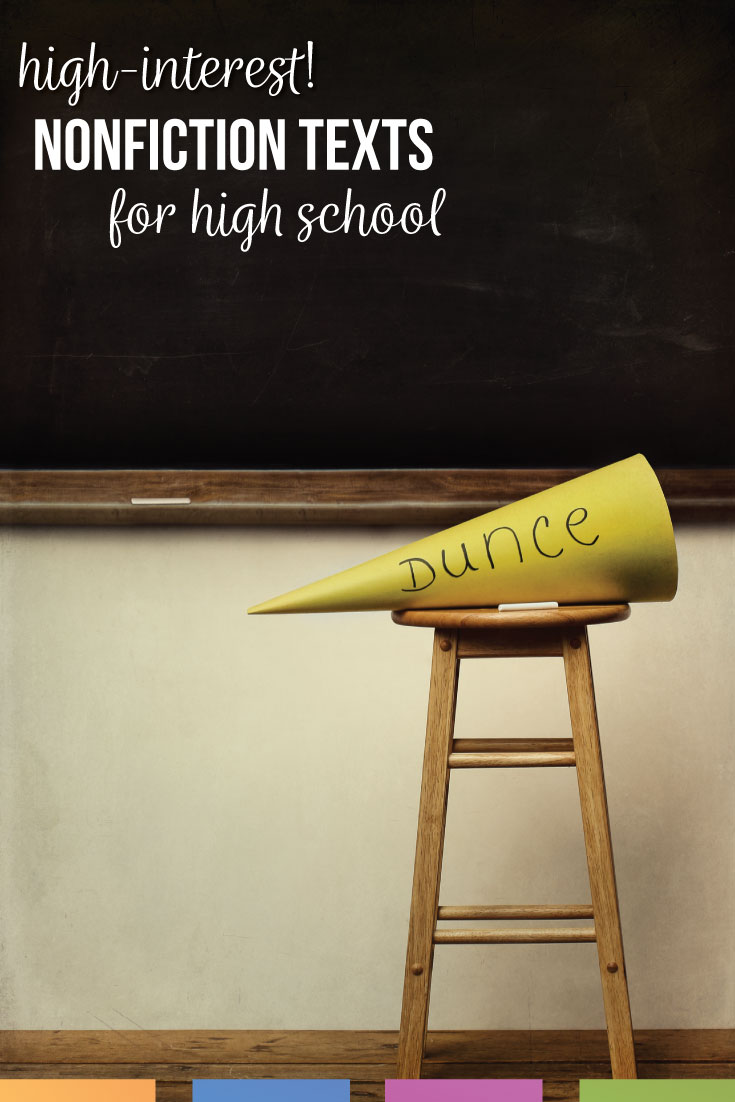
Finding appropriate informational texts for secondary students is one part of your lesson plan, and cultivating meaningful responses with students is another part. Many times, the same errors will surface. Offset them at the start and refocus students so they can experience success.


